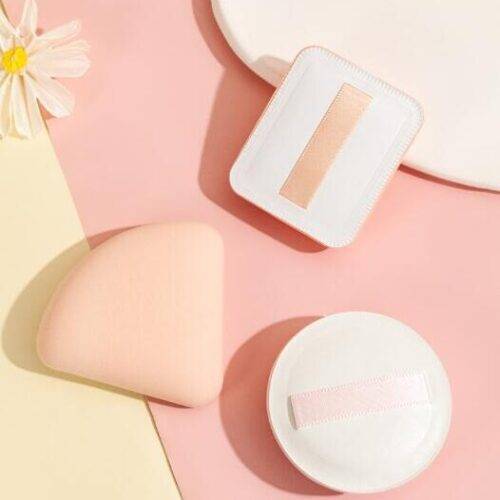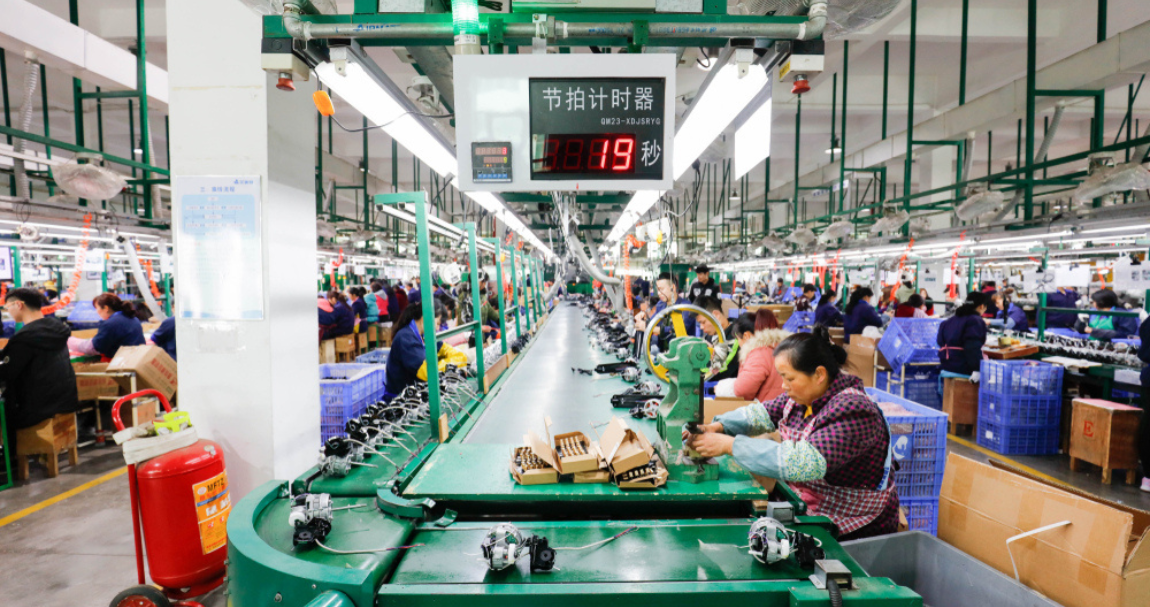Makeup sponges have become an essential tool in every beauty enthusiast’s arsenal. Whether you’re a makeup artist or someone who loves experimenting with different looks, these versatile sponges can work wonders to achieve a flawless finish. Let’s explore the fascinating world of makeup sponge creation and the detailed process involved in their production. Discover the art of making makeup sponges with us. So, let’s dive in and discover the journey that brings these little wonders to life!

Materials Used in Makeup Sponge Production

Makeup sponges have become essential in the beauty industry, allowing for seamless and flawless makeup application. These sponges are designed to provide smooth and even coverage, making them a must-have for makeup enthusiasts and professionals alike. The creation of makeup sponges involves the use of specific materials that contribute to their functionality and effectiveness.
Materials Used in Makeup Sponge Production
Makeup sponges have become essential in the beauty industry, allowing for seamless and flawless makeup application. These sponges are designed to provide smooth and even coverage, making them a must-have for makeup enthusiasts and professionals alike. The creation of makeup sponges involves the use of specific materials that contribute to their functionality and effectiveness.
1. Latex
One of the primary materials used in makeup sponge production is latex. Latex is a natural rubber material derived from the rubber tree sap. It offers several beneficial properties for creation of makeup sponges, including flexibility, durability, and softness.
2. Polyurethane Foam
Polyurethane or PU foam is another commonly used material in cushion makeup sponge production. It is a synthetic material that offers excellent absorbency and softness. PU foam sponges are highly porous, holding and distributing liquid or cream products evenly on the skin.
3. Non-Latex Hydrophilic Foam
Non-latex foam is a popular alternative to latex for makeup sponges for those with allergies. This type of foam is typically made from polyurethane or polyvinyl alcohol. It possesses similar properties to latex and polyurethane foam, including softness, absorbency, and flexibility.
4. Silicone
Due to its unique properties, silicone has gained popularity for creation of makeup sponges. Silicone sponges are typically made from medical-grade silicone, which is hypoallergenic and easy to clean. Unlike traditional foam sponges, silicone sponges do not absorb the product, making them highly efficient and economical.
5. Natural Sea Sponges
While less commonly used than synthetic materials, natural sea sponges have been utilized in makeup sponge production. These sponges are harvested from the ocean, providing a unique texture and application experience. Natural sea sponges are known for holding water and distributing products evenly on the skin.
The Manufacturing Process

4.1. Material Preparation: Foam Formation
To produce makeup sponges, the initial stage is to prepare the materials. The primary raw material used to create makeup sponges is polyurethane foam. Polyurethane foam is a lightweight and porous material ideal for creating the soft texture of makeup sponges.
A mixture of polyurethane chemicals, commonly known as a polyol blend, forms the foam. This blend typically consists of polyols, isocyanates, and other additives. The polyol blend is carefully mixed and poured into a mold. The mold is then heated, which triggers a chemical reaction known as polymerization. Polymerization causes the mixture to expand and solidify into a foam block.
4.2. Cutting and Shaping: Creating the Sponge Base
Once the foam block is formed, it is cut into smaller pieces to create the sponge bases. Specialized cutting machines cut the foam blocks into the desired shapes and sizes. These machines can cut the foam blocks into various forms, such as rectangles, triangles, or circles, depending on the design of the makeup sponge.
After the cutting process, the foam pieces undergo further shaping. The edges of the foam pieces are smoothed out to ensure a uniform and seamless finish. This step is crucial to prevent rough edges that irritate the skin during makeup application.
.3. Sponging and Buffing: Refining the Texture
Once the sponge bases are shaped, they go through a sponging and buffing process to refine their texture. This step involves mechanically treating the foam to create makeup sponges’ characteristic soft and porous surfaces. The foam pieces are compressed and rubbed against abrasive surfaces, such as sandpaper or buffing wheels.
The sponging and buffing process refines the texture and helps open the foam’s pores. This enhances the sponge’s ability to absorb and distribute makeup products evenly on the skin. It also creates the unique bounce and flexibility that makeup sponges are known for, allowing for precise and effortless application.
4.4. Sensitization and Quality Control
Before the makeup sponges are ready for packaging, they undergo a sensitization process to ensure their safety for use on the skin. Sensitization involves subjecting the sponge bases to tests to check for any potential allergenic or irritating substances. This is crucial to avoid any adverse reactions when the sponges come into contact with the skin.
Once the sensitization process is complete, the makeup sponges undergo rigorous quality control checks. These checks involve inspecting the sponges for defects, such as uneven texture, tears, or irregular shapes. Any defective sponges are removed from the production line to ensure only high-quality products reach the market.
After passing the quality control checks, the makeup sponges are ready for packaging. They are typically individually wrapped or placed in sets, ready to be shipped to stores or consumers.
Different Types of Makeup Sponges and Their Production Variations

Makeup sponges have become an essential tool in every makeup enthusiast’s kit. They provide a flawless finish and allow for the seamless blending of foundation, concealer, and other cosmetic products. Over the years, the beauty industry has introduced various makeup sponges with different shapes, materials, and production variations.
5.1. Traditional Wedge-shaped Sponges
The traditional wedge-shaped sponge is the most recognizable and commonly used makeup sponge. It features a classic triangular shape with a pointed tip and a broad base. These sponges are typically made from latex or latex-free materials and are known for their versatility.
In terms of production, traditional wedge-shaped sponges are typically manufactured using a mold. The mold is filled with liquid latex or a latex-free material mixture and then heated and cooled to solidify the sponge into its desired shape.
5.2. Teardrop and Hourglass-shaped Sponges
Teardrop and hourglass-shaped sponges are innovative designs that have recently gained popularity. These sponges are more ergonomic than traditional wedges, allowing for more precise application in hard-to-reach areas like the under-eye and around the nose.
The production process for the teardrop and hourglass-shaped sponges is similar to traditional wedges. The molds used for these shapes are specifically designed to achieve the desired shape and dimensions. The liquid material is poured into the molds and undergoes the same heating and cooling process.
5.3. Silicone Makeup Sponges
Due to their unique properties, silicone makeup sponges have gained popularity among makeup enthusiasts. Unlike traditional sponges, silicone sponges are made of non-porous silicone material, so they do not absorb the product, resulting in less product wastage. In addition, they are more effortless to clean and keep up.
The production process for silicone sponges involves pouring liquid silicone into molds specifically designed for the desired shape and size. The silicone is then cured or set using heat or a chemical process, resulting in a solid and flexible silicone sponge. After curing, the sponges are carefully removed from the molds and undergo quality control checks before being packaged for sale.
5.4. Latex-free and Vegan Options
With increasing awareness and demand for cruelty-free and vegan products, the beauty industry has introduced latex-free and vegan makeup sponges. These sponges are suitable for individuals with latex allergies or those who prefer to use animal-free products.
The production process for latex-free and vegan makeup sponges is similar to traditional sponge production, with the critical difference being the materials used. Instead of latex, these sponges are made from synthetic materials such as polyurethane foam or hydrophilic polymer.
Final Words
To sum up, making makeup sponges is a captivating process that requires accuracy, strict quality standards, and dedication to fulfilling the desires of makeup lovers. Understanding the effort behind making makeup sponges can increase your appreciation for them, whether you’re a makeup artist or an enthusiast. And if you’re in the market for wholesale makeup sponges, Panda Sponge is a reliable partner, ensuring that you receive top-notch products from production to delivery at your doorstep.

Get a Quote
Custom Makeup Sponge and Puffs

Maggie Peng serves as the esteemed Product Manager at Panda Sponge, where she has garnered a wealth of experience and expertise over the course of five years. With a primary focus on product design, testing, and development, Maggie has consistently exhibited her prowess in these domains.

